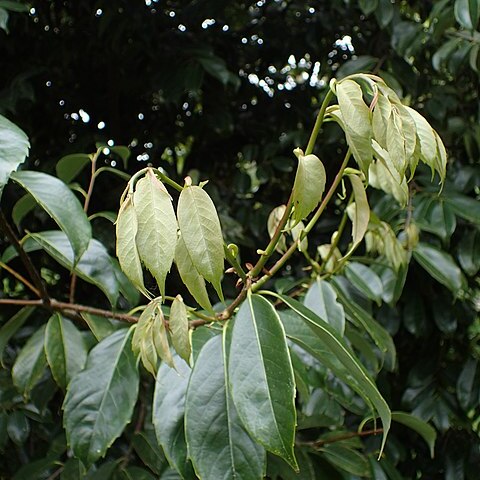An evergreen medium sized tree. It grows 15-20 m high. The trunk is 30-35 cm across. The leaf blade is sword shape and 4-12 cm long by 1-4.5 cm wide. It is leathery. There are 8-13 side veins on each side of the main vein. The cup is oval and 1-1.5 cm across. The outside is yellowish brown with felt like hairs. The nut is round to cone shaped.


